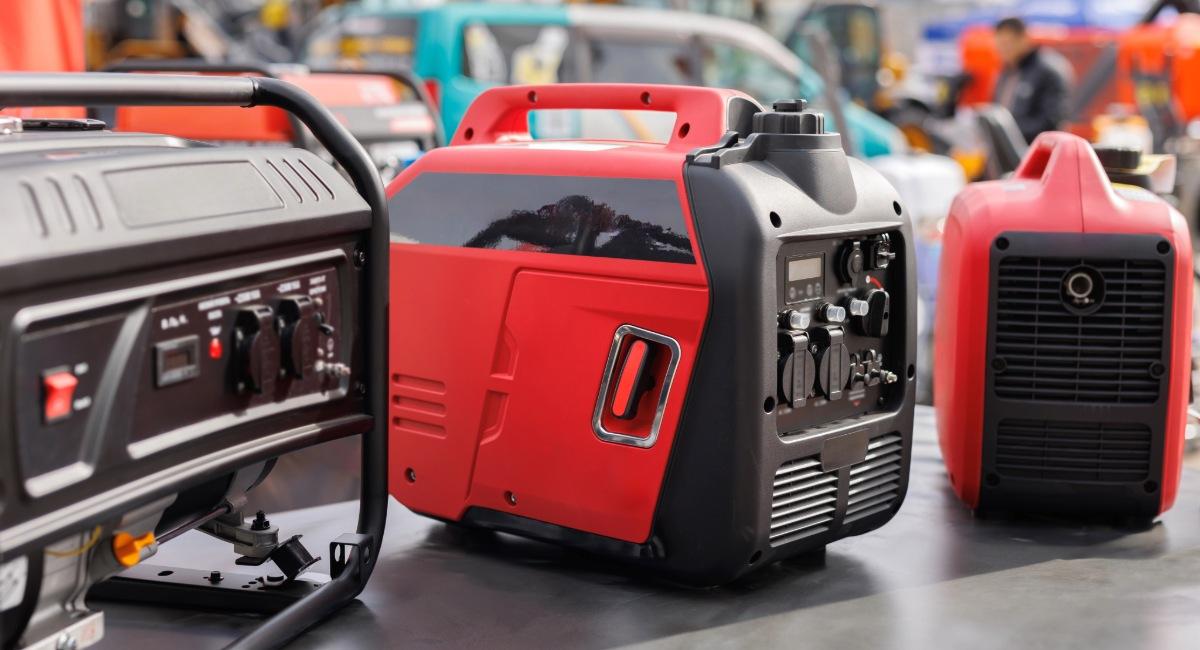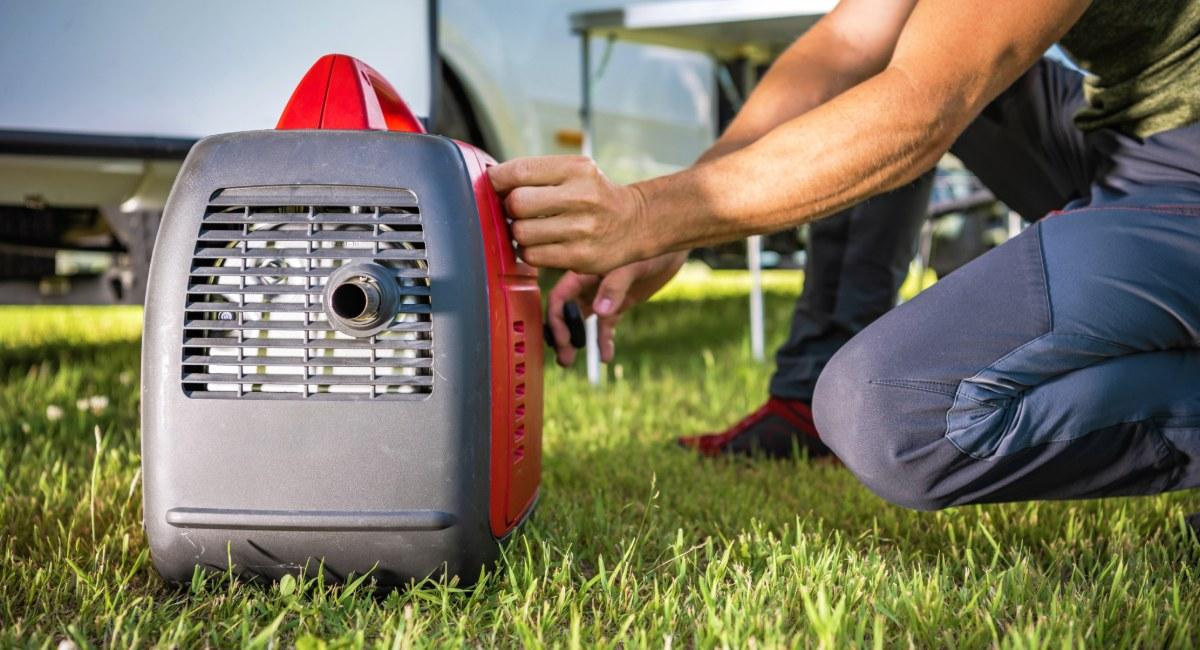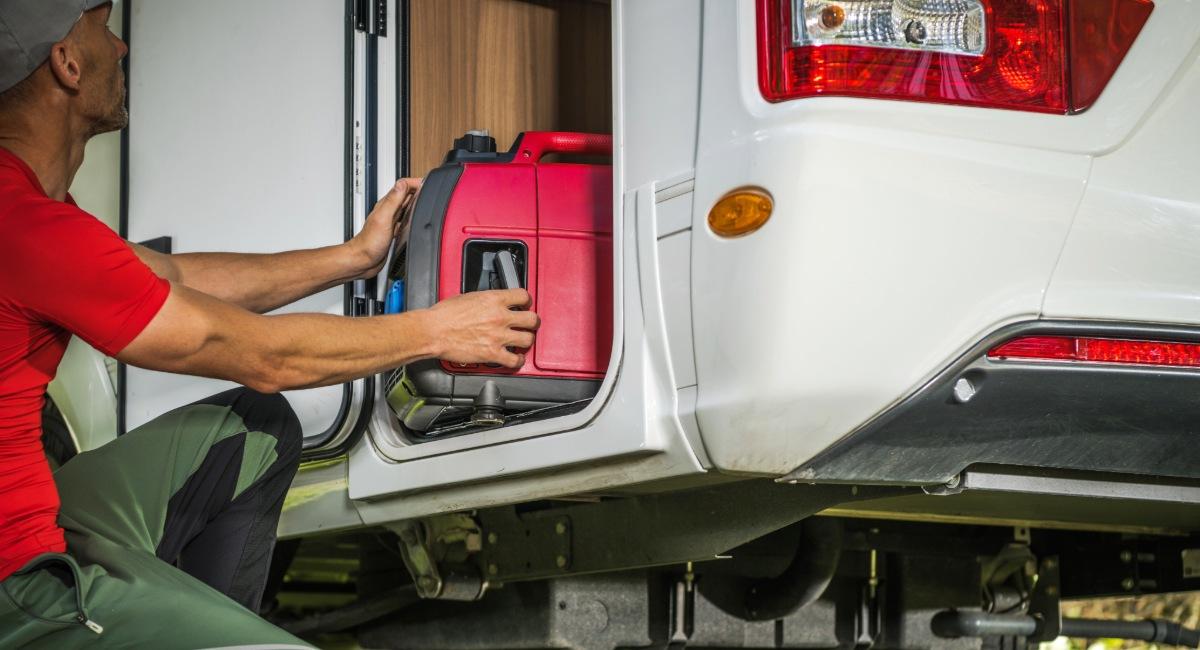
For a 30-amp RV, you'll need a 3,000-3,500-watt generator to keep the lights on and the good times rolling. Your RV's maximum capacity is 3,600 watts (30 amps x 120 volts), but real-world usage rarely hits that ceiling. An inverter generator in this range handles AC startup surges, runs your fridge and lights simultaneously, and leaves headroom for safety. A solid 3,200W inverter generator gives you plenty of juice for the AC, is quiet enough for campgrounds, and is fuel-efficient for extended boondocking adventures.
Your 30-amp RV system maxes out at 3,600 watts (30 amps × 120 volts), but smart RVers never push it that hard.
Think of your RV's electrical system like a highway with a speed limit. Just because the limit is 65 mph doesn't mean you're always driving 65. Same goes for your power system—that 3,600-watt ceiling is there for safety, but you'll rarely need every watt.
That 3,600-watt ceiling isn't really a target—it's more like a "don't go here unless you want to spend your vacation troubleshooting tripped breakers." Most folks find their sweet spot somewhere between 2,500-3,200 watts, which gives you room to breathe and keeps your electrical system happy for the long haul.
Your air conditioner is the hungry hippo of the RV world—it'll gobble up 2,200-3,000 watts just to get started, then settle into a steady 1,200-1,500 watts while running.
Here's what you're really dealing with when planning your generator size:
Source: Recreation Vehicle Industry Association (RVIA) 2024 Electrical Standards Guide
Here's the golden rule: you can't have it all at once. Try running the AC, microwave, and hair dryer simultaneously, and you'll be sitting in the dark wondering what happened. The trick is learning to stagger high-draw appliances—maybe skip the hair dryer when the AC is cycling on.

Inverter generators provide cleaner, more stable power that's safer for sensitive electronics, while conventional generators offer more raw power for the money but with voltage fluctuations.
Look, we get it. Sticker shock is real when you're comparing generator prices. That conventional generator might look pretty attractive at half the cost, but here's what you're really buying with each option:
Bottom line: If you're using smartphones, laptops, or modern RV management systems, the extra cost of an inverter generator pays off in protected electronics and peaceful camping.
The sweet spot for most 30-amp RV adventures? A solid 3,200-watt inverter generator provides the optimal balance of power capacity, weight, and fuel efficiency for diverse camping scenarios.
Your camping style dictates your power needs more than anything else. Are you the type who parks at a scenic overlook for a long weekend with just the basics? Or do you disappear into the wilderness for weeks at a time with enough gear to start your own small town?
The Right Fit: 2,800-3,200W inverter generator
You're not living out there full-time, so you don't need to power everything simultaneously. Your priorities are simple: keep the fridge cold, charge your devices, and maybe run the AC during those scorching afternoon naps. These generators are light enough (70-85 lbs) that you won't throw out your back setting up, and they'll run 8-12 hours on a few gallons of gas.
The Right Fit: 3,200-3,500W inverter generator
When it comes to serious adventures, you need reliable power for longer stretches, efficient battery charging, and the flexibility to run your AC when Mother Nature cranks up the heat. The fuel efficiency of an inverter generator becomes your best friend when the nearest gas station is 50 miles away. Plus, they're quiet enough that you won't feel guilty running them during extended stays.
The Right Fit: 3,500W+ or dual 2,000W parallel setup
Your RV is your home, so you need maximum flexibility. Some days you'll want to run the AC, make coffee, and catch up on work all at the same time. Consider parallel generators for redundancy—if one goes down, you're not completely powerless. You might also want to think about upgrading to 50-amp service if you haven't already. And while you're planning for the full-time lifestyle, make sure your insurance coverage matches your reality with full-time RV insurance that protects your home on wheels.
The Right Fit: 2,500-3,000W portable unit
You're mostly on hookups, so your generator is backup insurance and occasional dry camping enabler. Go smaller, lighter, and more budget-friendly since you won't be leaning on it every day. Think of it as your safety net rather than your primary power source.

Grab a notepad, walk through your RV, and list what you absolutely can't live without running at the same time—then add 20-30% for startup surges and safety margins.
Here's your DIY power audit:
What do you absolutely need running at the same time? Most RVers discover their real needs are:
Now for the stuff that makes camping feel less like survival and more like vacation:
Here's where things get interesting. AC units can draw 2,200W for 3-5 seconds when starting. Your generator needs to handle this surge without shutting down.
Take your total and multiply by 1.25 (that's your 25% safety cushion): 2,030W × 1.25 = 2,538W minimum
Real-world recommendation: Round up to 3,000W and you'll sleep better knowing you've got breathing room.
Understanding your RV's electrical limitations is crucial for safe operation. For a deeper dive into 30-amp RV electrical systems and power management, Renogy's comprehensive guide covers everything from circuit basics to energy efficiency tips.
Calculation method adapted from RVIA Technical Standards, 2024
Honda and Yamaha still lead the pack for reliability, while Champion offers excellent value for budget-conscious RVers.
Here's the lineup that's earned its stripes:
Real talk: If you're protecting a six-figure RV investment, the added cost of a quality inverter generator is like insurance for your electronics. And while you're at it, make sure you've got the right RV insurance coverage — the kind that actually understands generator equipment and electrical systems.
Carbon monoxide detection, proper grounding, and regular maintenance can prevent most generator-related RV accidents.
Generator safety can be the difference between great camping stories and tragic headlines. The National Fire Protection Association (NFPA) calls carbon monoxide "the invisible killer" for good reason—you can't see it, smell it, or taste it until it's too late. Here's how to keep yourself and your fellow campers safe:
Every 50 Hours or Start of Season (whichever comes first):
Every 100 Hours or Annually:
Storage Prep (because generators don't like sitting idle):

Time for some honest self-assessment. Grab a pencil and see how your setup measures up. Think of this as your pre-flight checklist:
Your Score: ___/10
8-10 points: You're well-prepared for safe generator use
6-7 points: Address the gaps before your next tripUnder 6 points: Time for a safety upgrade (don't fire up that generator until you've fixed the basics)
Don't panic—there's usually a simple explanation hiding somewhere obvious:
Time to play electrical detective:
You've got the inside scoop on choosing the right generator for your 30-amp RV. Whether you're planning to blast the AC through a desert summer or keep the coffee hot during a mountain sunrise, the right generator setup gives you the freedom to make memories anywhere the road leads.
But let's be honest, sometimes the universe has other plans. Storms roll in and send tree branches flying. Your generator decides to take an unscheduled break right when you need it most. That perfect boondocking spot has a hidden stump that finds your RV's soft spots.
That's where having the right coverage makes all the difference. You've invested in the generator, the safety equipment, and the knowledge to use it all properly. Now, make sure you've got RV insurance that actually understands how you camp.
Ready to power your RV adventures worry-free? Get a personalized quote from Roamly and pair it with the right generator protection today.
Roamly Insurance Group, LLC ("Roamly") is a licensed general agent for affiliated and non-affiliated insurance companies. Roamly is licensed as an agency in all states in which products are offered. Availability and qualification for coverage, terms, rates, and discounts may vary by jurisdiction. We do not in any way imply that the materials on the site or products are available in jurisdictions in which we are not licensed to do business or that we are soliciting business in any such jurisdiction. Coverage under your insurance policy is subject to the terms and conditions of that policy and is ultimately the decision of the buyer.
Policies provided by Roamly are underwritten by Spinnaker Insurance Company, Progressive Insurance Company, Safeco Insurance, Foremost Insurance Company, National General Insurance, Allstate Insurance Company, Mobilitas Insurance Company, Lyndon Southern Insurance Company and others.